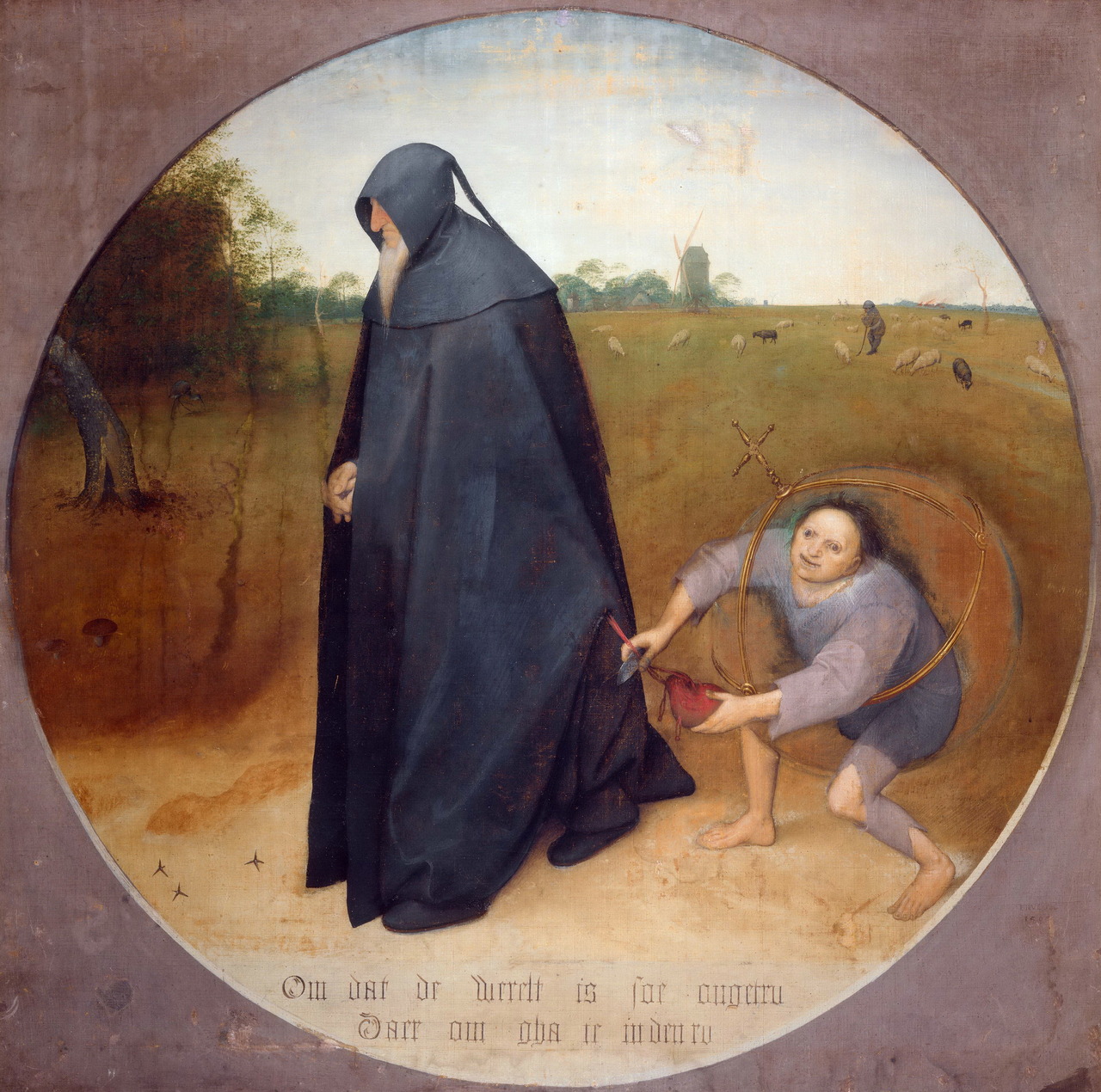…A sober philosophy of man’s place in nature…
Bruegel’s recognition of human foibles never reduced him to bitterness, or at least never to any discernible in his group. From the mass of it we can deduce that he regarded misanthropy as a form of self-interest as degrading in its way as avarice or gluttony. He said something of the kind in The Misanthrope, a painting not easy to decipher, where a stooped, sour old man plods through a landscape composed in the form of a circle, much like the world, or the circle of life, or perhaps even the wheel of fortune.

—“The Misanthrope” is the last completed work of Pieter Bruegel the Elder. We read in the caption below: “Because the world is unreliable, I sit and mourn”. It is an ambiguous work with two basic interpretations:
The one that the resignation and the closure in yourself is not an option because the passivity and alienation are against you taking poor experience in real life (ie you can easily fall victim of stealing or you could step on nails if your mind is busy with bad mood thoughts) while the shepherd in the background has accepted life as it is and has developed mechanisms to survive and for self protection.
On the other hand, a monk/scholar, etc. that has solved the livelihood problem can easily be isolate with arrogance himself, criticizing life by looking down the world, but this is possible because he is affluent, as the thief reveals us by stealing his wallet. It is a stunning representation of someone closed in on himself with its imposing black hooded cloak. —click image for source…
The old man has isolated himself within this world under a black cloak with a deep hood. We see only his long drooping nose, his tight, turned down mouth, and his dangling white beard. Everything is hidden from him except the bit of barren path immediately beneath his lowered gaze, where a few thorns are scattered. He is oblivious to the deep landscape stretching beyond him, which perhaps indicates time or infinity, and where a shepherd tends a flock of sheep, some black, some white, and a windmill turns.
The misanthrope is not aware either, of a bizarre, ragged little figure encased in a crystal globe, perhaps also the world, who has reached up under the cloak to pinch the old man’s money bag. The misanthrope is doubly robbed: wrapped in the false security of his symbolic cloak and hood, he robs himself of the world, but he cannot escape the world even so, for it in turns robs him…





 COMMENTS
COMMENTS